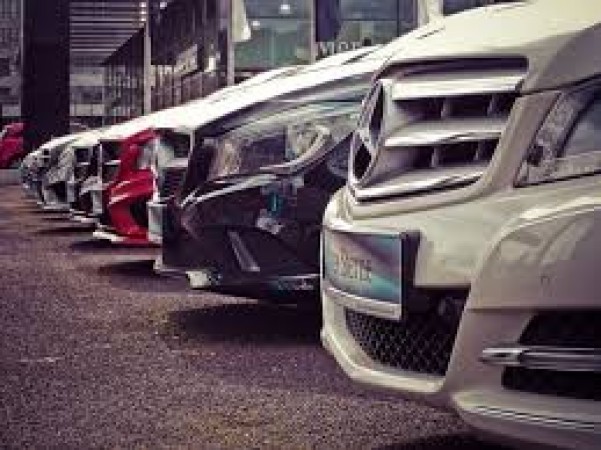
When you walk into a car showroom, the experience is thrilling. The shiny cars, the smell of new interiors, the eager salespeople – it’s an atmosphere designed to make you want to drive away in a brand-new vehicle. But have you ever wondered how much money the showroom owner makes when a car is sold? Let’s dive into the world of car dealerships and uncover the financial dynamics behind every car sale.
A car dealership is a business that sells new or used cars at the retail level, based on a dealership contract with an automaker or its sales subsidiary. They can also carry a wide variety of Certified Pre-Owned vehicles. Dealerships often provide additional services like maintenance and financing.
The gross profit margin is the difference between the cost to the dealer and the sale price. On average, the gross profit margin on a new car is about 8% to 10%, while used cars might fetch a 20% to 25% margin.
After accounting for all expenses, the net profit margin on a car sale is typically lower. For new cars, it can be as low as 1% to 2%, and for used cars, it can range from 5% to 7%.
Selling new cars is the most visible revenue stream. However, the margins here are often slim due to competition and manufacturer pricing controls.
Used cars generally have higher profit margins. Dealerships often acquire these vehicles through trade-ins, auctions, or direct purchases.
A significant portion of a dealership’s profit comes from financing and insurance products. Dealerships earn commissions from lenders and markups on insurance products.
Service departments are critical profit centers. Regular maintenance, repairs, and parts sales contribute significantly to the bottom line.
Automakers often provide incentives to dealerships to help move inventory. These can include cash bonuses, dealer holdbacks, and volume bonuses.
These include rent, utilities, salaries, marketing, and more. The overheads can be substantial, particularly for large franchise dealerships.
Dealerships must finance their inventory, either through loans or floor plan financing. This adds interest costs that can eat into profits.
Promoting the dealership and its vehicles is essential but costly. This includes everything from traditional advertising to online marketing campaigns.
Economic factors, consumer confidence, and interest rates all influence car sales. A downturn can significantly impact dealership earnings.
Dealerships in affluent or high-traffic areas tend to perform better due to higher foot traffic and wealthier clientele.
A well-regarded brand and strong reputation can drive more customers and sales. Trust and loyalty play big roles in repeat business.
Higher sales volumes can lead to better incentives from manufacturers and more significant profits.
Exceptional service can lead to repeat customers and referrals, which are invaluable to a dealership’s success.
Salespeople typically earn a base salary plus commission. Commissions can be a fixed amount per car or a percentage of the profit.
Top performers might receive bonuses based on their sales volume or customer satisfaction scores.
Well-trained salespeople who understand the product and can build rapport with customers are crucial to closing sales and maximizing profits.
The day starts early, reviewing sales targets, inventory, and market conditions. Meetings with sales and service teams set the tone for the day.
Showroom traffic picks up. The owner monitors operations, steps in to close significant deals, and ensures customer satisfaction.
Attention shifts to the service department and finance office. Ensuring that these departments are running smoothly and profitably is crucial.
The day ends with a review of the day’s sales, planning for tomorrow, and addressing any pressing issues.
Recessions or economic slowdowns can drastically reduce car sales, impacting revenues.
New laws or regulations, such as emission standards, can affect inventory and sales strategies.
Intense competition from other dealerships and online platforms can pressure margins and sales.
Keeping up with new technology, both in vehicles and in sales processes, requires ongoing investment.
By expanding into areas like service contracts, extended warranties, and accessories, dealerships can bolster their earnings.
A focus on excellent customer service can drive repeat business and referrals, increasing long-term profitability.
Investing in advanced CRM systems and digital marketing can enhance sales efficiency and reach.
Maintaining good relationships with manufacturers, lenders, and customers can lead to better deals, financing options, and customer loyalty.
As EVs become more popular, dealerships will need to adapt their sales strategies and service capabilities.
The rise of online car buying platforms requires dealerships to enhance their digital presence and streamline online sales processes.
The advent of autonomous vehicles could transform the car buying experience and the dealership business model.
Car subscription services are emerging, offering an alternative to traditional car ownership and impacting dealership revenue streams.
Showroom owners navigate a complex and dynamic industry. While the margins on new car sales may be slim, a combination of used car sales, financing, service, and manufacturer incentives contribute to overall profitability. By understanding market conditions, focusing on customer service, and leveraging technology, dealership owners can maximize their earnings and ensure long-term success.
Is Your Smartphone Ruining Your Relationship? Know The Surprising Truth
Xiaomi's Redmi Pad Pro Receives BIS Certification, India Launch Soon: What to Expect More
If you are going to color your hair for the first time then keep these things in mind